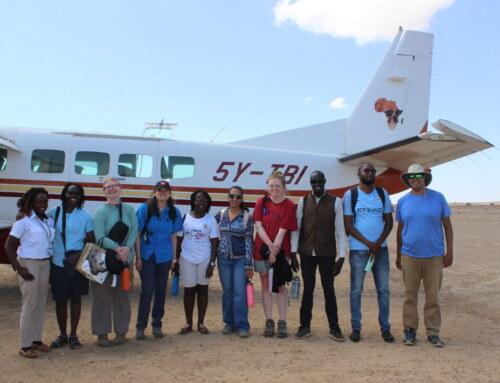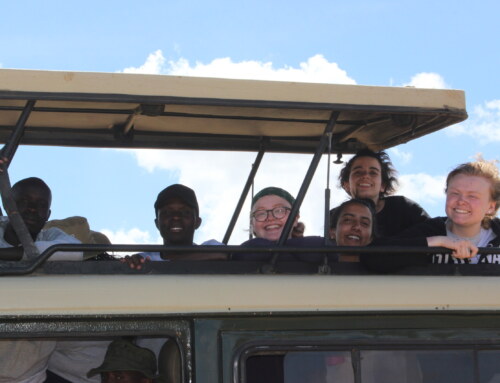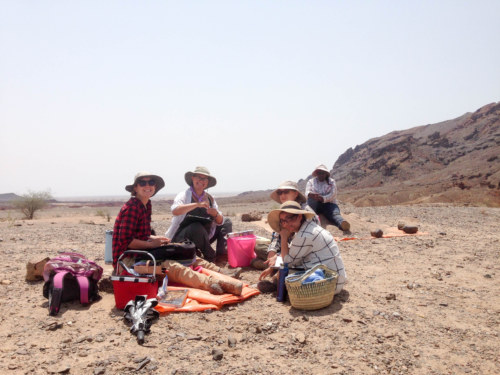
(Left to right) Dr. Sawchuk, TA Evelyn, Karolina, Adrianne, and Cecilia working hard on the bioarchaeology unit
We’ve returned from the field! Yesterday afternoon we returned to the TBI Turkwel Campus after the 9-day excavation for the Archaeology module. Everyone enjoyed their wonderful TBI shower, dinner, and beds after roughing it in the field the last week. Today the students are having a well-deserved day off before finishing up the second module by writing their final reports on their daily jobs and accomplishments on site.

LPWT’s camp at Lothagam
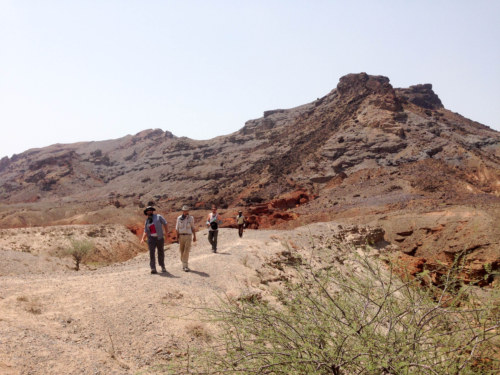
(Left to right) Ian, Dr. Storozum, Morgan, and Alex walk back from geology work for the day
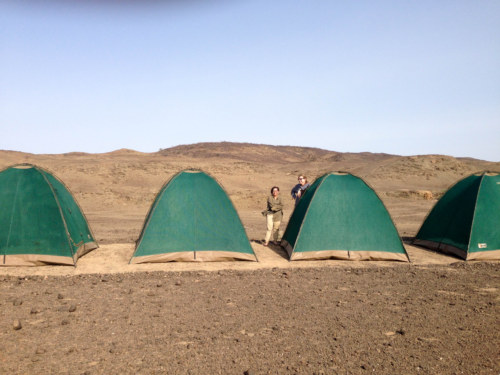
Adrianne (left) and Karolina hanging out by the student tents
The students’ time in the field was divided between survey and excavation on an early Holocene fisher-hunter-gatherer archaeological site within the Lothagam geological formation and time spent in the field camp. Every day we had breakfast at 6am sharp and would start our 15 minute drive in the lorry (truck) from camp to the site. We would start work on site just after 7 am. On site, students were trained in a wide range of archaeological methods by Dr. Elisabeth Hildebrand, Dr. Steve Goldstein, Dr. Elizabeth Sawchuk, and Dr. Michael Storozum. Every day students were assigned to one of the different archaeological teams that were operating at different excavation units. Students rotated between the different work units, which ranged from geology, bioarchaeology, surveying, operating the total station, and general excavation. After a couple of days of getting familiar with the methods specific to each work unit, the excavation forms that are used to keep track of everything, and the general workflow at each unit, the students became more and more independent in their work on site.
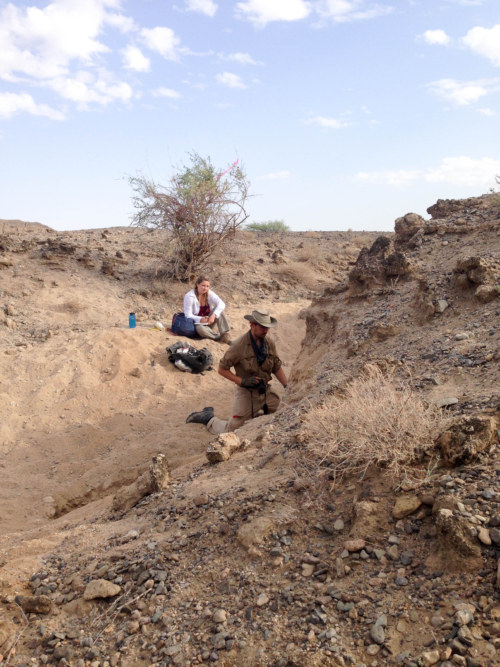
Kelly and Dr. Storozum dig a geological profile
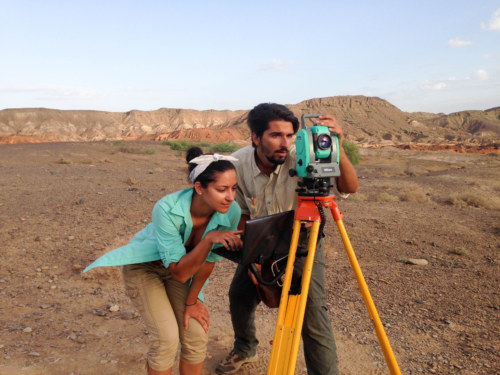
Petra and Evan at the total station
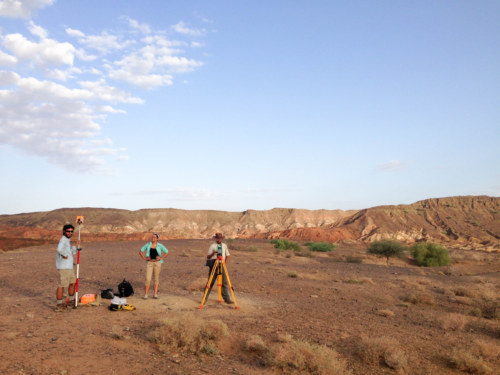
Ryan, Petra, and Evan work the total station for the day
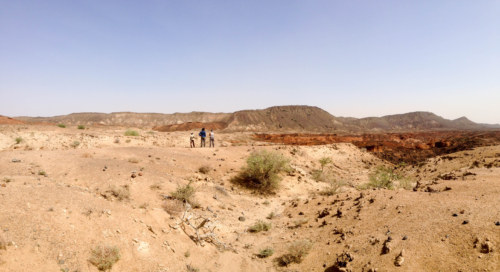
The beautiful geology of Lothagam
The site we worked on is located between two faulted ridges that mainly consist of dark, volcanic basalt. Even though this makes for stunning views, in the early afternoon the heat gets trapped and makes it impossible to work on site much later than 2 pm. We therefore aimed to wrap up all work on site around 2 pm so that we could drive back to camp to have a late lunch there. After lunch, students were given some free time to pass the hottest part of the day before some smaller cataloging and admin jobs would require a couple of students to work between 4 and 6pm in the lab tent. After this, we would all have a quick field-shower (which had beautiful views on the Lothagam Hills) before having dinner. After each day on site we would finish the evening with a team meeting at the dinner table, during which a student from each work unit would give a brief presentation on that day’s progress at the unit. For example, it could be a short presentation on the hypotheses on the depositional processes that caused the alteration between coarse gravel beds and finer grained sand beds that were found throughout the site (for the geology team), or the announcement and specifics of the find of an obsidian flake in situ (meaning still in context, retrieved through excavation rather than picked up from the surface) at an excavation unit.
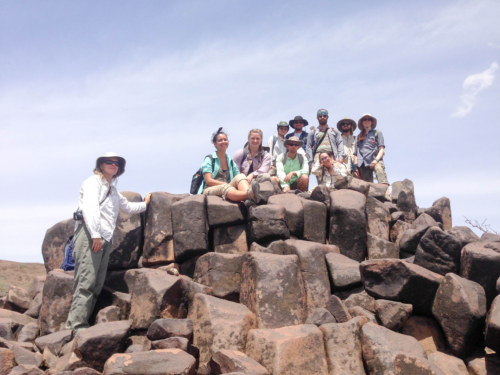
Dr. Hildebrand and the group pose for a photo on top of the natural formation of basalt pillars
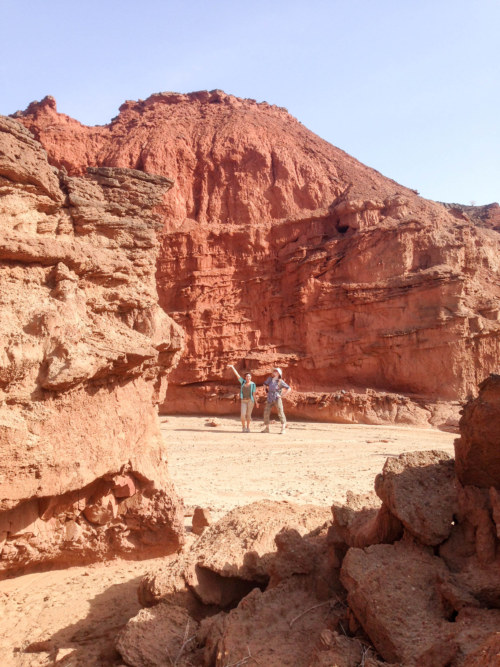
Petra and Karolina pose for scale next to a beautiful outcrop
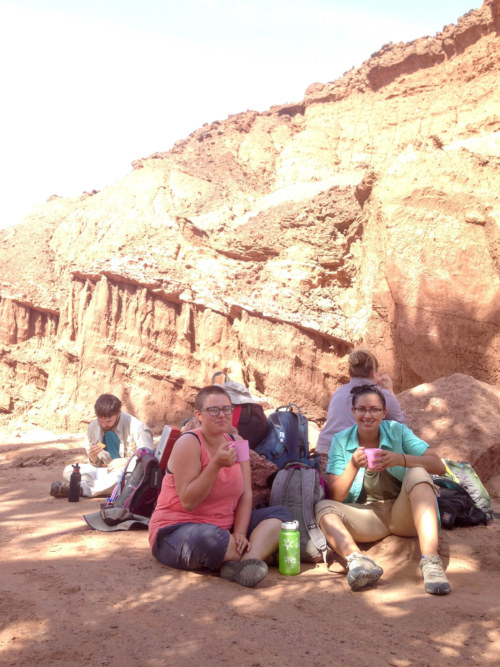
Everyone stops for chai in the shade
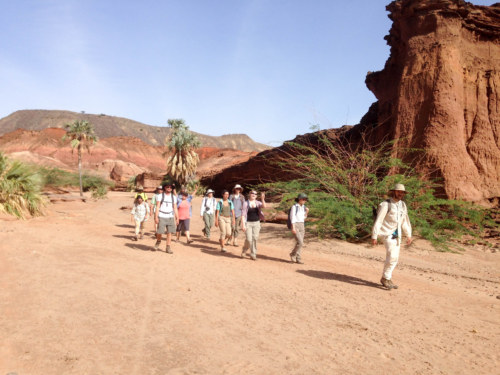
The students hiked through Lothagam on their day off from work
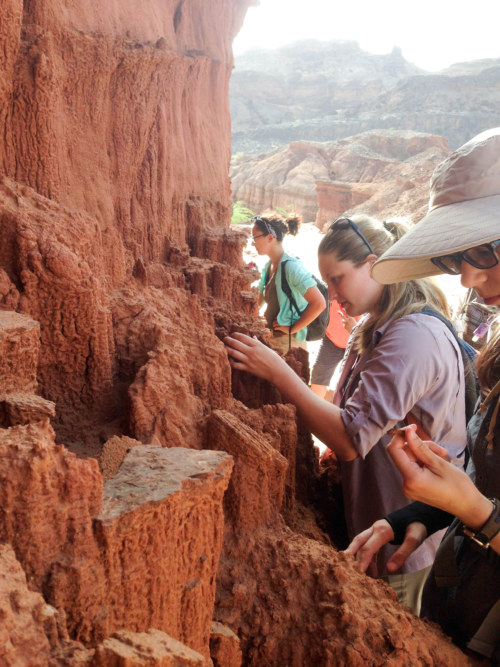
(Left to right) Petra, Kelly, and Karolina take a closer look at the exposed sediments of a Lothagam outcrop
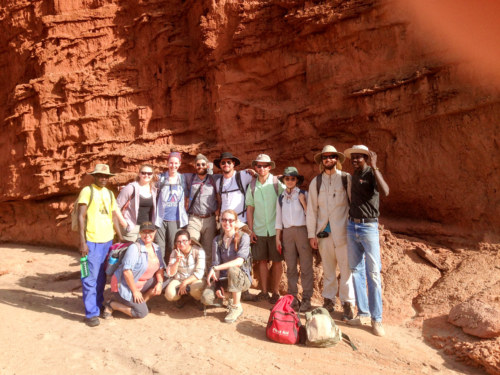
Everyone poses for a photo in front of the beautiful rock formations of Lothagam
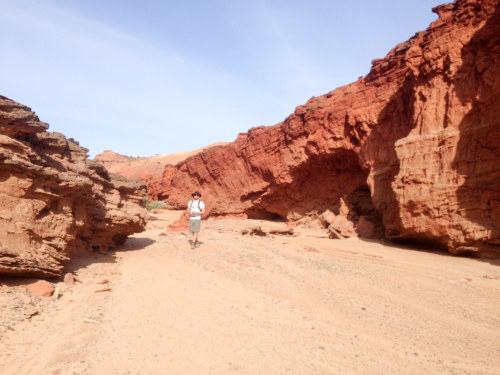
The red beds of the Lothagam contain sediments as old as 7 million years before present!
Mid-way through our time in the field the students enjoyed a day off from working on site. Dr. Hildebrand guided us through the wonderful canyons surrounding the site and led us on a hike to visit the Lothagam pillar sites as well as the source from which prehistoric people brought these pillars. The hike was challenging (very hot!), but the views from within the canyons and atop the surrounding ridges were amazing. To be able to walk from one Holocene site to another under the expert guidance of Dr. Hildebrand was a wonderful experience. During the walk and at each site, Dr. Hildebrand explained to us the geological context and the major finds and significance of each site. We all felt humbled to not only be shown these sites by the project leader of the Lothagam archeological project, but also to have been given the privilege to participate and contribute to the fieldwork at the Lothagam sites.
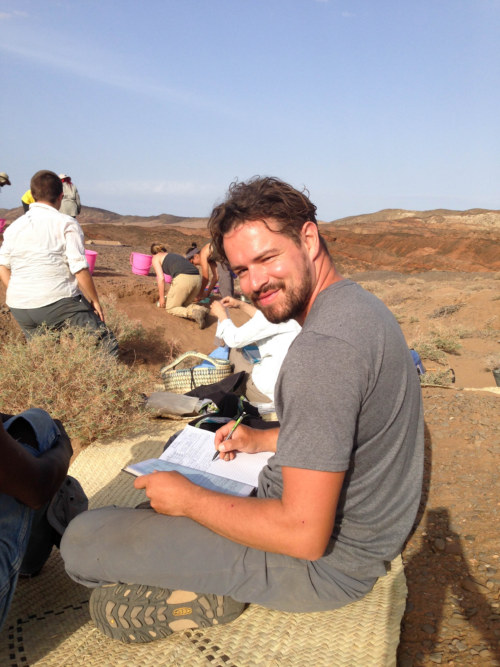
Morgan
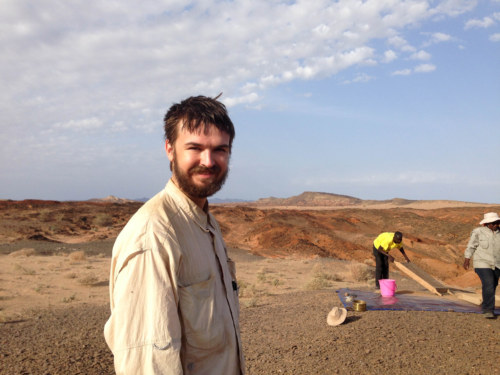
Nathan
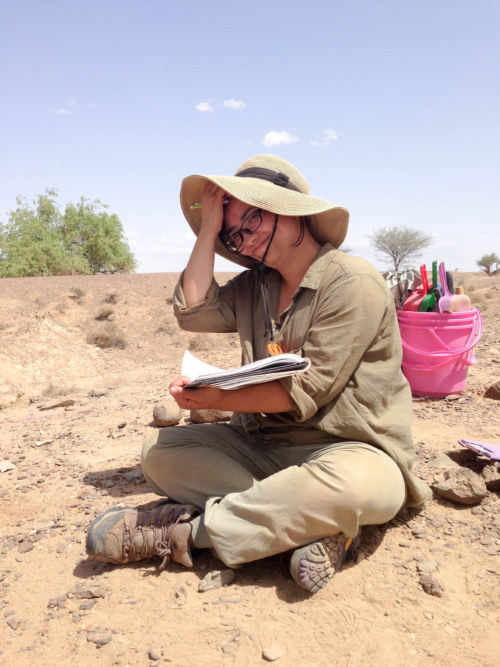
Adrianne
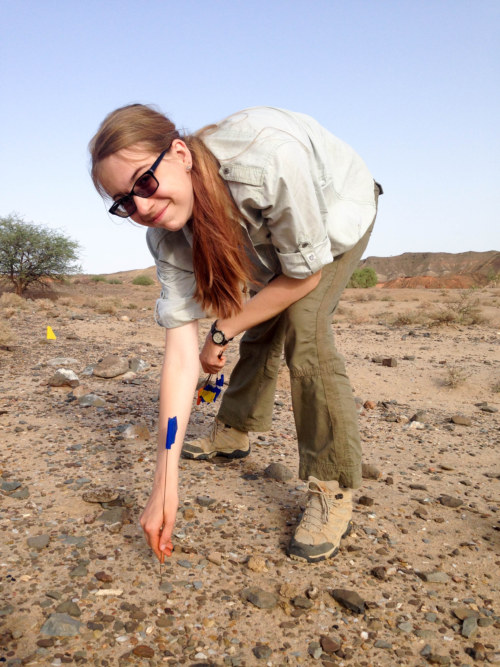
Karolina
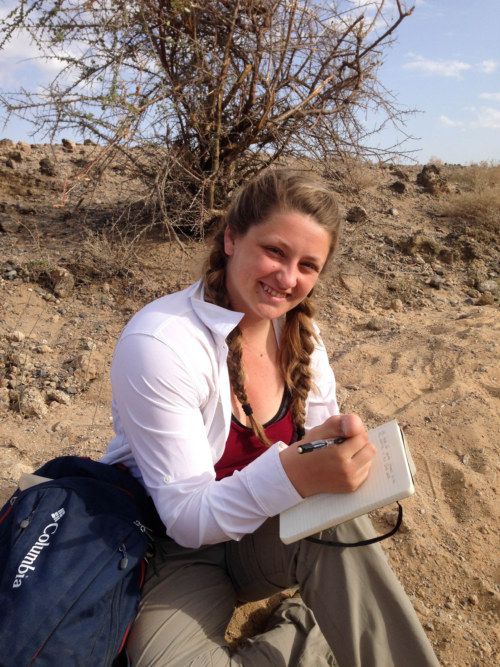
Kelly
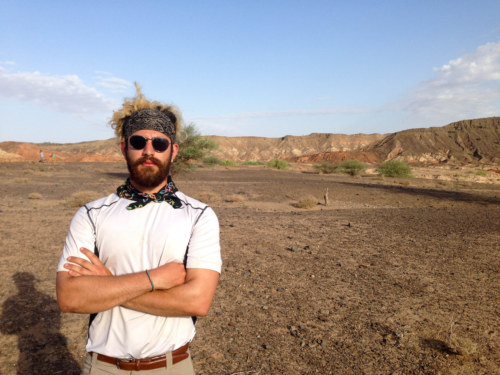
Ian
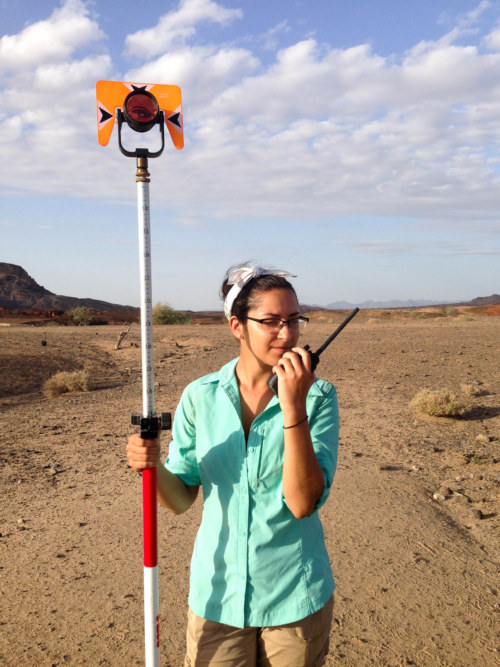
Petra
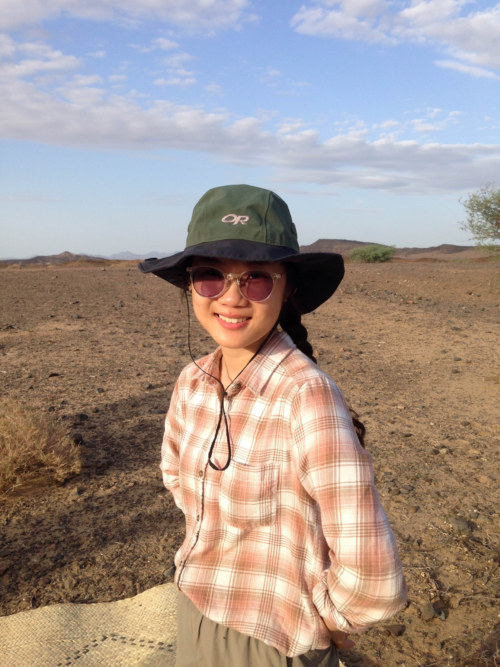
Sheng
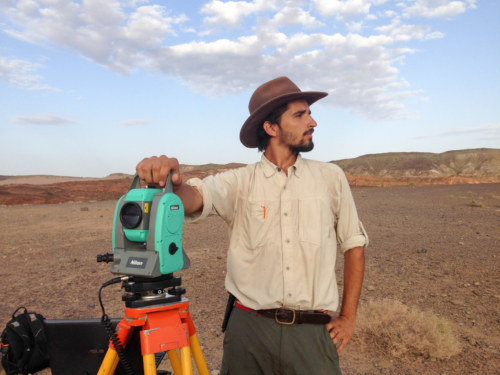
Evan
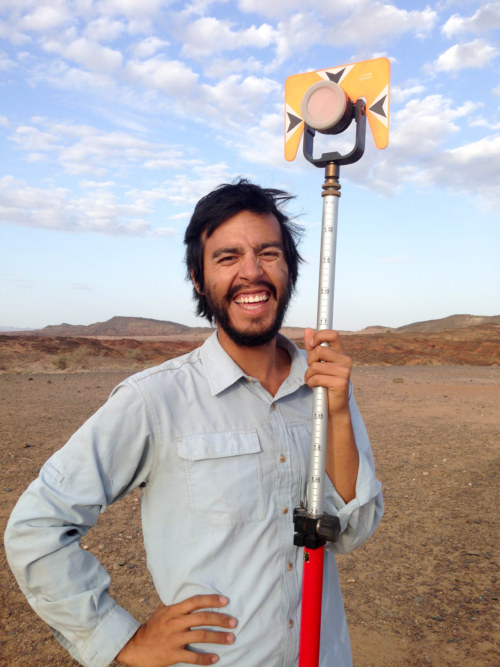
Ryan




